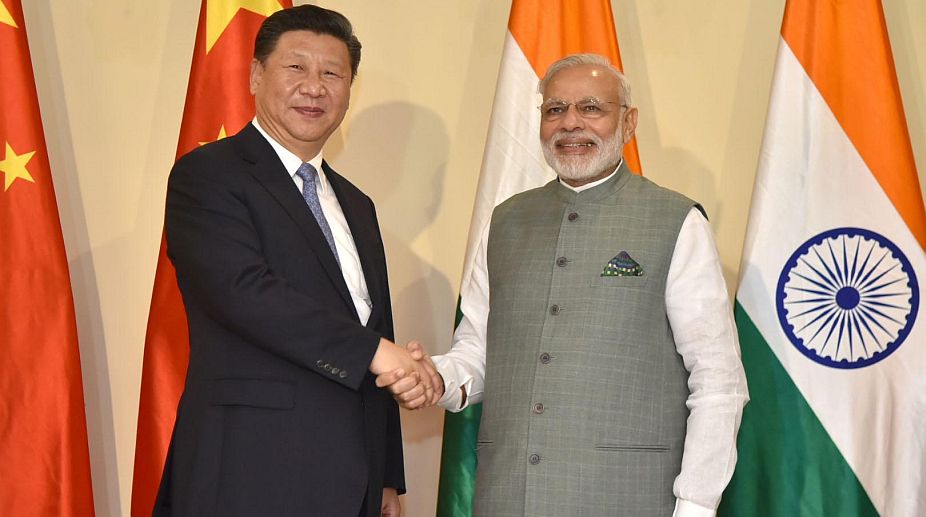In the backdrop of the standoff between Indian and Chinese troops on the India-China-Bhutan tri-junction, Prime Minister Narendra Modi is going to meet Chinese President Xi Jinping when leaders of the BRICS nations hold a meeting on the sidelines of the G20 Summit in Hamburg on July 7.
"A meeting of BRICS leaders will take place in Hamburg on the sidelines of the G20 Summit on July 7," a source here said on Tuesday.
"The meeting is expected to have the presence of Prime Minister Modi and the Chinese President," the source said.
China on Monday said India was using Bhutan to "cover up" the illegal entry by Indian troops into "Chinese territory" and demanded their immediate withdrawal.
Earlier, seeing Chinese troops, personnel of a Bhutan Army camp on a ridge at a place called Zompelri rushed down and confronted the Chinese and told them that they cannot unilaterally change the existing status quo in the tri-junction.
Indian Army personnel, who were present in the general area Doka La in Sikkim on the other side, too rushed to the spot to help the Bhutanese soldiers. However, by that time the PLA had pushed back the Bhutanese and then came to a face-to-face situation with the Indian Army personnel.
The Indian soldiers too made it clear to the Chinese soldiers that they had no business changing the existing unilateral status quo in the tri-junction.
There is no Chinese territory between India's border in the Sikkim sector with Bhutan.
India and China had in 2012 reached an agreement that the tri-junction boundary points between India, China and third countries will be finalised in consultation with the concerned countries. Both the countries share three international tri-junctions – with Bhutan, Myanmar and Afghanistan.
Bhutan too has written agreements with China of 1988 and 1998 stating that the two sides agreed to maintain peace and tranquility in their border areas pending a final settlement on the boundary question, and to maintain status quo as before March 1959.
Following the June 16 incident, Bhutan officially lodged a protest at the Chinese Embassy in New Delhi on June 20. Beijing and Thimphu do not share diplomatic ties.
The matter also came up for discussion at a border personnel meeting (BPM) between India and China at Nathu La in Sikkim on June 20.
Last Thursday, the Bhutanese Foreign Ministry issued a press release which stated Bhutan has conveyed to the Chinese side, both on the ground and through the diplomatic channel, that the construction of the road inside Bhutanese territory was in direct violation of the agreements and affects the process of demarcating the boundary between the two countries.
"Bhutan hopes that the status quo in the Doklam area will be maintained as before June 16," the statement said.
Though the June 16 incident is being seen as forcing India's hand to change the status quo in the tri-junction, it is understood that New Delhi has been approaching the matter in a reserved manner so that Bhutan does not come under pressure despite the fact that the road being constructed near Indian defence lines posed serious security implications.
The External Affairs Ministry in a statement on Friday said that India has taken up the matter with China at the diplomatic level both in New Delhi and Beijing.











